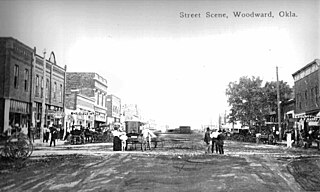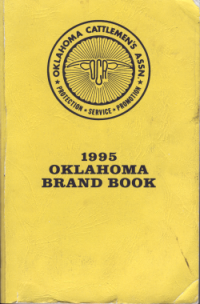
Texas and Southwestern Cattle Raisers Association, Inc., is an organization established in 1877 by forty Texas cattlemen for the purpose of combating unbridled livestock theft. The association headquarters is located in Fort Worth.

Texas and Southwestern Cattle Raisers Association, Inc., is an organization established in 1877 by forty Texas cattlemen for the purpose of combating unbridled livestock theft. The association headquarters is located in Fort Worth.
The Texas and Southwestern Cattle Raisers Association was founded in Graham by forty ranchers from Palo Pinto County, Young County, Parker County, and Shackelford County, including C.C. Slaughter and James C. Loving. [1] [2] [3] Loving was the secretary and later treasurer of the organization until his death in 1902. [2]
More than 135 years later, the association acts as a trade association composed of large and small cattle producers located primarily in Texas and Oklahoma. Other businesses dedicated to the betterment of the industry are also association members. Twenty-nine livestock theft investigators or "special rangers" [4] employed by the association have law enforcement authority in Texas and Oklahoma in recovering stolen livestock. TSCRA deals with legislative and regulatory issues, beef quality assurance, and rancher education. The association holds local meetings, an annual convention, and an annual trade show. It publishes a monthly magazine for members, The Cattleman. [5]

The Texas Longhorn is an American breed of beef cattle, characterized by its long horns, which can span more than 8 ft (2.4 m) from tip to tip. It derives from cattle brought from the Iberian Peninsula to the Americas by Spanish conquistadores from the time of the Second Voyage of Christopher Columbus until about 1512. For hundreds of years the cattle lived a semi-feral existence on the rangelands; they have a higher tolerance of heat and drought than most European breeds. It can be of any color or mix of colors. In some 40% of the cattle it is some shade of red, often a light red; the only shade of red not seen is the deep color typical of the Hereford.

Young County is a county located in the U.S. state of Texas. As of the 2020 census, its population was 17,867. Its county seat is Graham. The county was created in 1856 and organized in 1874. It is named for William Cocke Young, an early Texas settler and soldier.

Palo Pinto County is a county located in the U.S. state of Texas. As of the 2020 census, its population was 28,409. The county seat is Palo Pinto. The county was created in 1856 and organized the following year.

Woodward is a city in and the county seat of Woodward County, Oklahoma, United States. It is the largest city in a nine-county area. The population was 12,133 at the time of the 2020 census.

Oliver Loving was an American rancher and cattle driver. Together with Charles Goodnight, he developed the Goodnight-Loving Trail. He was mortally wounded by Native Americans while on a cattle drive.

The Chisholm Trail was a trail used in the post-Civil War era to drive cattle overland from ranches in Texas to Kansas railheads. The trail was established by Black Beaver, a Lenape guide and rancher, and his friend Jesse Chisholm, a Cherokee merchant. They collected and drove numerous cattle along the trail to Kansas, where they could be shipped east to achieve higher prices. The southern terminus was Red River Station, a trading post near the Red River along the northern border of Texas. The northern terminus was a trading post near Kansas City, Kansas. Chisholm owned both of these posts. In the years of the cattle drives, cowboys drove large herds from ranches across Texas to the Red River Station and then north to Kansas City.

A drift fence is any long, continuous fence used to control the movement of animals in a particular open range, or to collect animals for research.

A Brand Book records all livestock brands registered with an organization. In the U.S. most states have branding laws that require brands to be registered before use. This may be a state agency or a private association regulated by the state. Most states with such laws have a Brand Book for the entire state. Texas, an exception, registers brands at the county level. These book are usually provided free to law enforcement personnel and County Extension Agents. Some states have their Brand Books available online.

Cattle drives were a major economic activity in the 19th and early 20th century American West, particularly between 1850s and 1910s. In this period, 27 million cattle were driven from Texas to railheads in Kansas, for shipment to stockyards in St. Louis and points east, and direct to Chicago. The long distances covered, the need for periodic rests by riders and animals, and the establishment of railheads led to the development of "cow towns" across the frontier.

The Fort Worth Stock Show & Rodeo is the oldest continuously running livestock show and rodeo. It has been held annually in Fort Worth, Texas since 1896, traditionally in mid-January through early February. A non-profit organization, the Stock Show has provided millions of dollars in grants and scholarships in its tenure and continues to provide hundreds of thousands of dollars annually to assist the future leaders of agriculture and livestock management.
Milton Faver was a pioneering cattle rancher in Presidio County, Texas, the preeminent cattle baron of the Big Bend in the nineteenth century, and one of the most important individual contributors to Big Bend history. Also known in his time by the honorary title, don Melitón, he founded Cibolo Creek Ranch halfway between Marfa and Presidio, Texas in 1857. He was one of the earliest Texas trail drivers, driving his cattle to market in New Orleans in the 1850s and to other markets later. Although his birthplace is not known with certainty, he was most likely born and raised in Missouri around 1822. Local lore contends that, while in his teens, he fought a duel and fled south, believing he had killed his opponent.
Christopher Columbus Slaughter (1837–1919) was an American rancher, cattle drover and breeder, banker and philanthropist in the Old West. After serving in the Confederate States Army during the American Civil War of 1861–1865, he came to own 40,000 cattle and over one million acres of ranch land in West Texas. He became the largest taxpayer in Texas, and used his wealth to endow Baptist institutions. He was known as the "Cattle King of Texas."

George Webb Slaughter (1811–1895) was an American Baptist minister, cattle breeder and drover, and rancher in Texas. Born in Mississippi, he drove cattle to Kansas and Louisiana, from his ranch near Palo Pinto, Texas. According to historian J. Marvin Hunter, "he baptized over 3,000 persons and ordained more preachers and organized more churches than any other person in the state of Texas."
James C. Loving (1836–1902) was an American cattleman and rancher in Texas. He raised "the largest purebred shorthorn herd" in the United States by the end of the nineteenth century. He was a co-founder of the Texas and Southwestern Cattle Raisers Association and served as its secretary for twenty-seven years.

Samuel Burk Burnett was an American cattleman and rancher from Texas, owner of the 6666 Ranch, and namesake of Burkburnett, Texas.
The Montana Stockgrowers Association (MSGA) is a non-profit membership organization that works on behalf of Montana cattle ranchers.
William B. Slaughter was an American rancher, cattle driver, banker and county judge. Born into a ranching family, he drove cattle and ranched in New Mexico before acquired a ranch in Sherman County, Texas. He founded local banks in Texas and New Mexico, and he was tried but acquitted on suspicion of faulty loans. He retired in San Antonio, Texas.
John Bunyan Slaughter was an American rancher and banker. Born to a ranching family, Slaughter ranched in Texas and New Mexico before acquiring the U Lazy S Ranch in Garza County, Texas, in 1901 and managing it for nearly three decades.
Colonel Cornelius T. Herring was an American rancher, banker and hotelier. He was the owner of up to five ranches in Texas. He was the founder of the Herring Bank. He built hotels in Vernon and Amarillo, Texas. He served as the first chairman of the West Texas Chamber of Commerce.
Minnie Lou Bradley was inducted into the National Cowgirl Museum and Hall of Fame in 2006. Bradley is considered an innovator in the beef cattle industry.